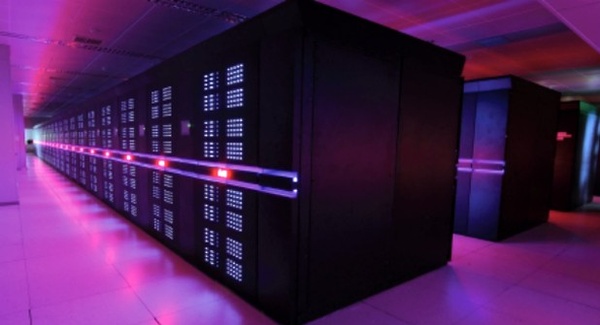

China now has the fastest supercomputer in the world: the Tianhe-2, which uses Intel’s just-announced Xeon Phi co-processors, is top of the latest Top500 list.
The Tianhe-2, or MilyWay-2, has been clocked at 33.86 Petaflops (quadrillion floating point operations per second), which makes it nearly twice as fast as the previous record holder.
The machine was built at the Chinese National University of Defence Technology in Guangzhou, by Chinese firm Inspur. It will be in full use by the end of the year – two years ahead of schedule – and represents a shift in strategy for China’s supercomputing, as its previous number one machine, the Xianhe-1, used Nvidia co-processors.
The Tianhe-2 has 16,000 nodes, with two Ivy Bridge sockets each, along with 48,000 Xeon Phi processor boards, for a total of 3,120,000 cores. It has already hit a short-term peak speed of 55 Petaflops, according to Intel’s vice president for data centres, Rajeeb Hazra, who described it as a “fundamental leap”.
The new record was announced on the first day of the International Supercomputing Conference in Leipzig, Germany, and left the previous holder a long way behind. The Titan at Oak Ridge National Laboratory in the US, a Cray XK7 mahcine, managed 17.59 Petaflops, and used Nvidia Tesla co-processors.
The Tianhe-2 is a bit of an energy guzzler compared with Titan, however. It gains its speed through simply having far more cores than Titan, and delivers 1.935 Gigaflops per Watt (Gflop/W) which is less efficient than Titan’s score of 2.143 Gflop/W.
Although Intel is pleased its parts are in the machine, it is in fact mostly of Chinese design, said Jack Dongarra, the editor of the Top500 list, and the creator of the Linpack supercomputing benchmark on which it is based.
The leader of the project is Professor Liao of the Defence University (pictured).
Do you know about Intel? Try our quiz!
Semiconductor imports are free of Trump's tariff war, but concerns remain over imports of smartphones…
SoftBank has agreed a funding deal that will see OpenAI being provided with up to…
Tesla sales have plummeted to lowest level in three years, as deliveries of new EVs…
New addition. Next generation foundation model, as Amazon Nova model launches to perform actions within…
Head of artificial intelligence research at Meta Platforms has announced she is leaving the social…
No decision yet, after media reports CK Hutchison was to spin off its global telecom…